Martin Herrmann
Extrinsic Camera Calibration with Semantic Segmentation
Aug 08, 2022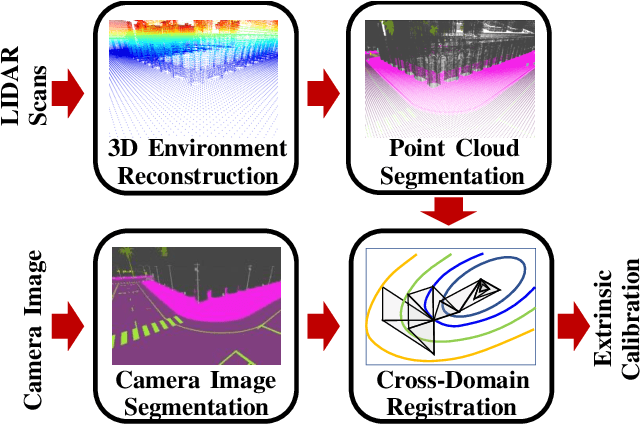
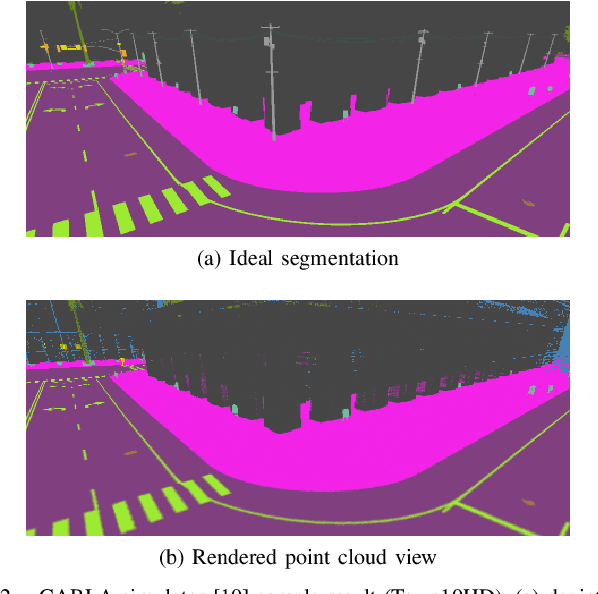
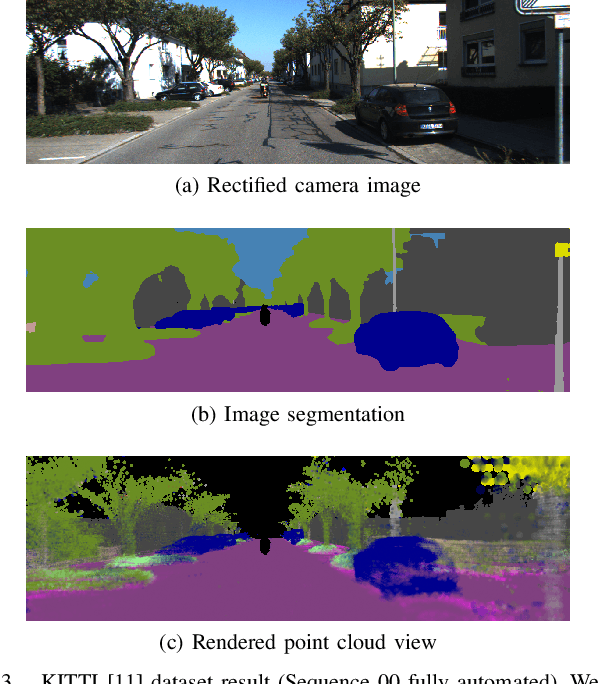
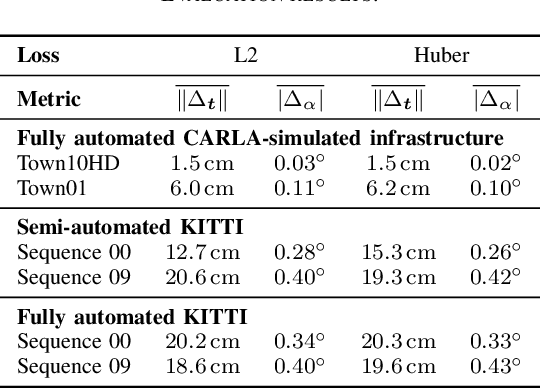
Abstract:Monocular camera sensors are vital to intelligent vehicle operation and automated driving assistance and are also heavily employed in traffic control infrastructure. Calibrating the monocular camera, though, is time-consuming and often requires significant manual intervention. In this work, we present an extrinsic camera calibration approach that automatizes the parameter estimation by utilizing semantic segmentation information from images and point clouds. Our approach relies on a coarse initial measurement of the camera pose and builds on lidar sensors mounted on a vehicle with high-precision localization to capture a point cloud of the camera environment. Afterward, a mapping between the camera and world coordinate spaces is obtained by performing a lidar-to-camera registration of the semantically segmented sensor data. We evaluate our method on simulated and real-world data to demonstrate low error measurements in the calibration results. Our approach is suitable for infrastructure sensors as well as vehicle sensors, while it does not require motion of the camera platform.
Self-Assessment for Single-Object Tracking in Clutter Using Subjective Logic
Jun 15, 2022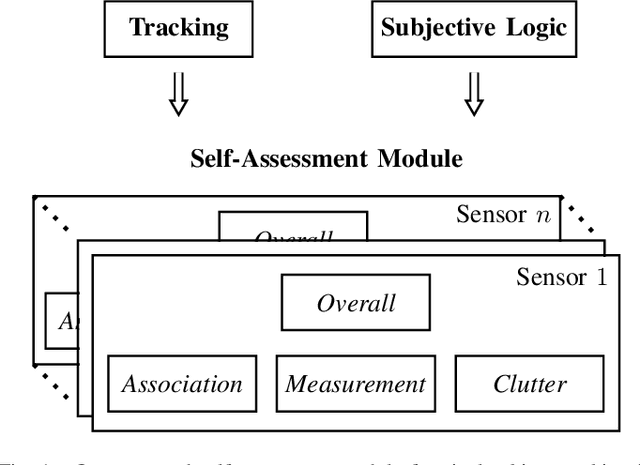
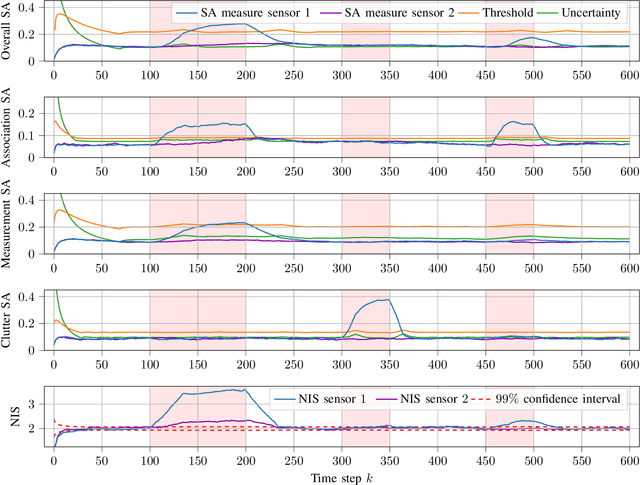
Abstract:Reliable tracking algorithms are essential for automated driving. However, the existing consistency measures are not sufficient to meet the increasing safety demands in the automotive sector. Therefore, this work presents a novel method for self-assessment of single-object tracking in clutter based on Kalman filtering and subjective logic. A key feature of the approach is that it additionally provides a measure of the collected statistical evidence in its online reliability scores. In this way, various aspects of reliability, such as the correctness of the assumed measurement noise, detection probability, and clutter rate, can be monitored in addition to the overall assessment based on the available evidence. Here, we present a mathematical derivation of the reference distribution used in our self-assessment module for our studied problem. Moreover, we introduce a formula that describes how a threshold should be chosen for the degree of conflict, the subjective logic comparison measure used for the reliability decision making. Our approach is evaluated in a challenging simulation scenario designed to model adverse weather conditions. The simulations show that our method can significantly improve the reliability checking of single-object tracking in clutter in several aspects.
Motion Planning for Connected Automated Vehicles at Occluded Intersections With Infrastructure Sensors
Oct 21, 2021



Abstract:Motion planning at urban intersections that accounts for the situation context, handles occlusions, and deals with measurement and prediction uncertainty is a major challenge on the way to urban automated driving. In this work, we address this challenge with a sampling-based optimization approach. For this, we formulate an optimal control problem that optimizes for low risk and high passenger comfort. The risk is calculated on the basis of the perception information and the respective uncertainty using a risk model. The risk model combines set-based methods and probabilistic approaches. Thus, the approach provides safety guarantees in a probabilistic sense, while for a vanishing risk, the formal safety guarantees of the set-based methods are inherited. By exploring all available behavior options, our approach solves decision making and longitudinal trajectory planning in one step. The available behavior options are provided by a formal representation of the situation context, which is also used to reduce calculation efforts. Occlusions are resolved using the external perception of infrastructure-mounted sensors. Yet, instead of merging external and ego perception with track-to-track fusion, the information is used in parallel. The motion planning scheme is validated through real-world experiments.
LMB Filter Based Tracking Allowing for Multiple Hypotheses in Object Reference Point Association*
Nov 11, 2020



Abstract:Autonomous vehicles need precise knowledge on dynamic objects in their surroundings. Especially in urban areas with many objects and possible occlusions, an infrastructure system based on a multi-sensor setup can provide the required environment model for the vehicles. Previously, we have published a concept of object reference points (e.g. the corners of an object), which allows for generic sensor "plug and play" interfaces and relatively cheap sensors. This paper describes a novel method to additionally incorporate multiple hypotheses for fusing the measurements of the object reference points using an extension to the previously presented Labeled Multi-Bernoulli (LMB) filter. In contrast to the previous work, this approach improves the tracking quality in the cases where the correct association of the measurement and the object reference point is unknown. Furthermore, this paper identifies options based on physical models to sort out inconsistent and unfeasible associations at an early stage in order to keep the method computationally tractable for real-time applications. The method is evaluated on simulations as well as on real scenarios. In comparison to comparable methods, the proposed approach shows a considerable performance increase, especially the number of non-continuous tracks is decreased significantly.
LACI: Low-effort Automatic Calibration of Infrastructure Sensors
Nov 05, 2019



Abstract:Sensor calibration usually is a time consuming yet important task. While classical approaches are sensor-specific and often need calibration targets as well as a widely overlapping field of view (FOV), within this work, a cooperative intelligent vehicle is used as callibration target. The vehicleis detected in the sensor frame and then matched with the information received from the cooperative awareness messagessend by the coperative intelligent vehicle. The presented algorithm is fully automated as well as sensor-independent, relying only on a very common set of assumptions. Due to the direct registration on the world frame, no overlapping FOV is necessary. The algorithm is evaluated through experiment for four laserscanners as well as one pair of stereo cameras showing a repetition error within the measurement uncertainty of the sensors. A plausibility check rules out systematic errors that might not have been covered by evaluating the repetition error.
 Add to Chrome
Add to Chrome Add to Firefox
Add to Firefox Add to Edge
Add to Edge